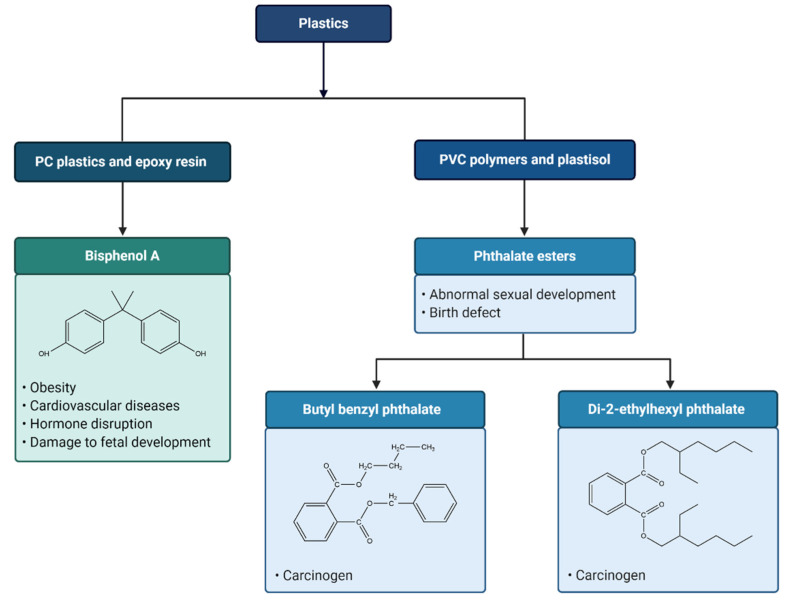Figure 4.
Overview of the toxic effects of chemicals leaching from plastics. Plastics are made up of different chemical compositions, in which some are hazardous that can leach to the surroundings upon degradation. Plastics typically contain additives that can improve their properties, such as durability and elasticity. The leaching of these additives from plastics to the surrounding environment, not only causing harmful impacts to the aquatic environment, but also human health. For instance, bisphenol A (BPA), an industrial chemical that is widely used to make polycarbonate (PC) plastics and epoxy resin as lining layer of food and beverage containers. Studies reported that the leaching of BPA from food containers into the food and drinks can cause a series of diseases, including obesity and cardiovascular diseases. BPA also acts as a hormonal disruptor, imitating or blocking the production, action, and function of hormones in the human body. BPA also known to affect brain development in the womb, causing damage to the developing fetus. Polyvinyl chloride (PVC) polymers and plastisol generally contain phthalate esters as plasticizers, in order to increase their durability and flexibility. Human exposure to phthalate esters has been shown to associate with abnormal sexual development and changes in the levels of sex hormones. Additionally, studies have demonstrated that some phthalate esters such as butyl benzyl phthalate (BBP) and di-2-ethylhexyl phthalate (DEHP) can increase tumor incidence in human, representing potential carcinogens.

